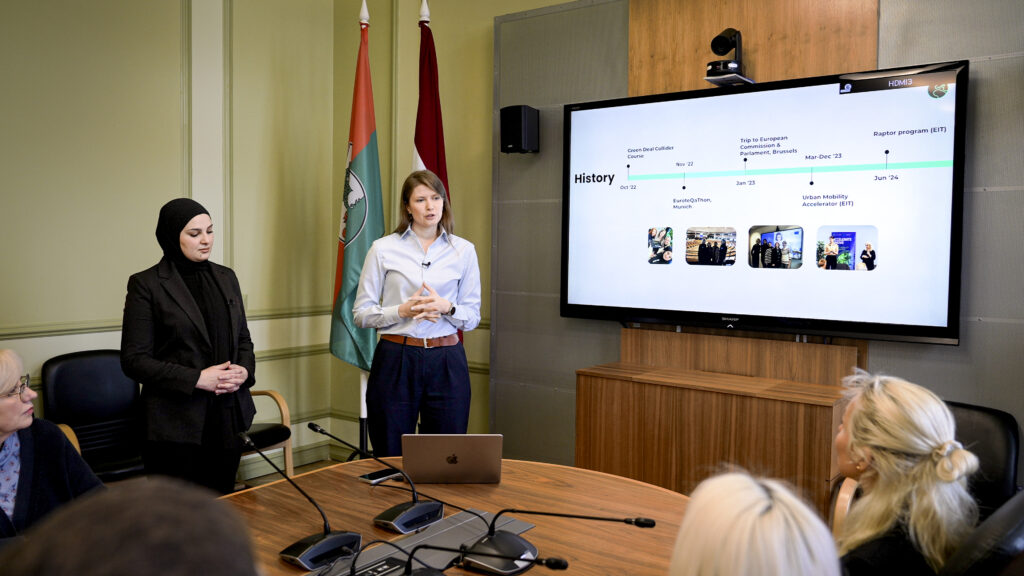GaiaHub is dedicated to delivering high-accuracy licence plate recognition using video data. Our system will utilise cameras equipped with sophisticated image processing capabilities to identify vehicle licence plates upon entry and exit of designated zones in Liepāja. By linking plate data to a vehicle registry, we can extract specific vehicle characteristics (type, model year and fuel type) together with traffic density data from existing urban sensors, which will be used to calculate precise CO2 emission levels using the SUMO emission calculator.
This proposal will directly tackle Liepāja’s emissions by providing a technological solution that allows the city to monitor and control emissions in real-time and supports dynamic policy-making and public engagement. By enabling a shift towards more accurate and proactive environmental management, it will help the city to effectively reduce its carbon footprint, improve air quality and advance toward its goal of becoming a climate-neutral city. The project will establish a benchmark for urban environmental management, demonstrating how integrated technological solutions can address complex sustainability challenges effectively.
GaiaHub’s solution will enable all of Liepāja KPIs to be implemented, directly aligning with RAPTOR project objectives for sustainable urban mobility. The project will also establish a benchmark for urban environmental management, demonstrating how integrated technological solutions can address complex sustainability challenges effectively.

Project start:
Project end:
Budget:
Countries
The project will calculate precise CO2 emission levels in Liepāja using licence plate data, thereby improving the city’s ability to monitor emissions in real-time.
The project addresses Liepāja’s current lack of effective monitoring of CO2 emissions from vehicles entering and leaving specific urban areas.
The project will enable automated data capture and real-time emissions monitoring, helping the city to become a climate-neutral city.
To help the City of Liepāja better understand and manage traffic-related emissions, GaiaHub installed smart cameras at two key intersections in Liepāja’s Low Emissions Zone. Using computer vision and license plate recognition, the system identifies vehicles and calculates emissions in real-time by linking to the Latvian National Car Registry. It also factors in variables like vehicle speed and acceleration to improve the accuracy of emissions estimates, including CO2, CO, and NO levels.
The data is accessible to city officials via an administrative dashboard enabling real-time analysis of vehicle emissions and traffic patterns across key intersections. This supports more informed urban planning and environmental policy decisions. A public landing page also provides residents with instant access to air quality and traffic data, helping them make smarter decisions about daily travel.
Updates
Subscribe to our newsletter to receive the latest news, organisation updates and opportunities.